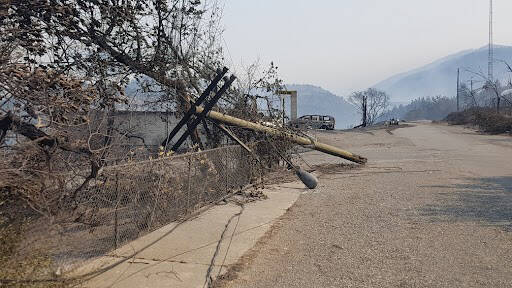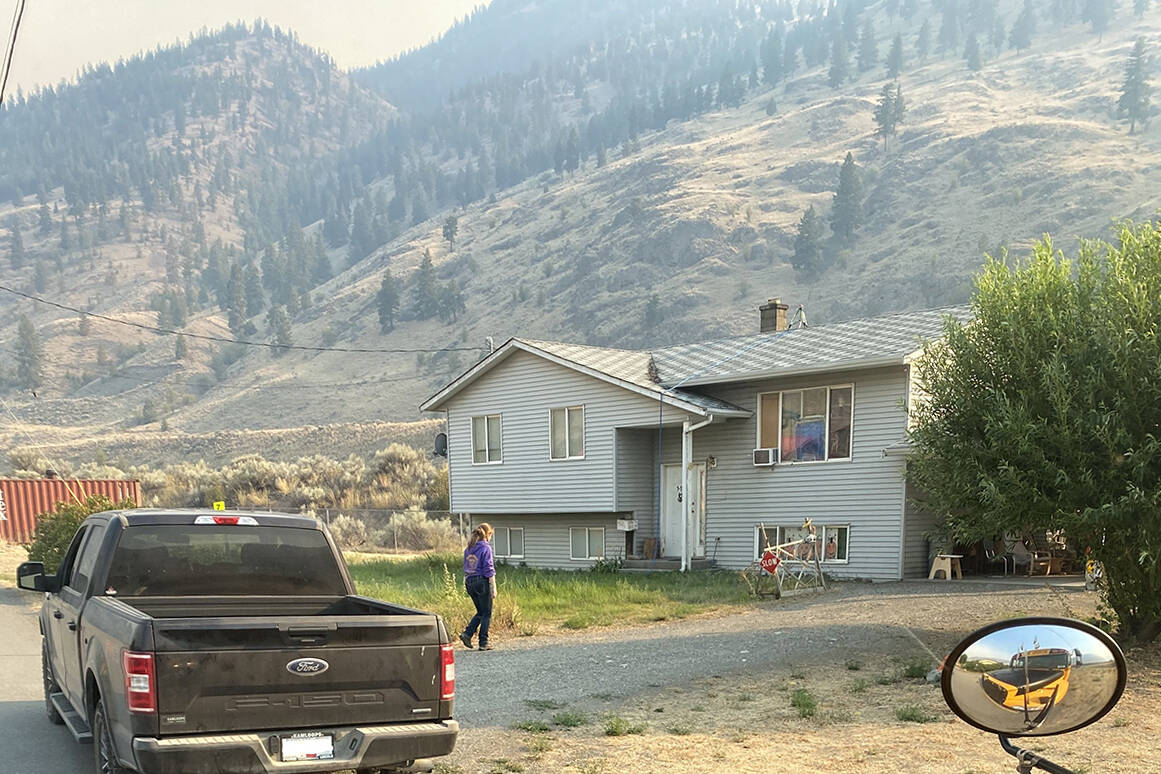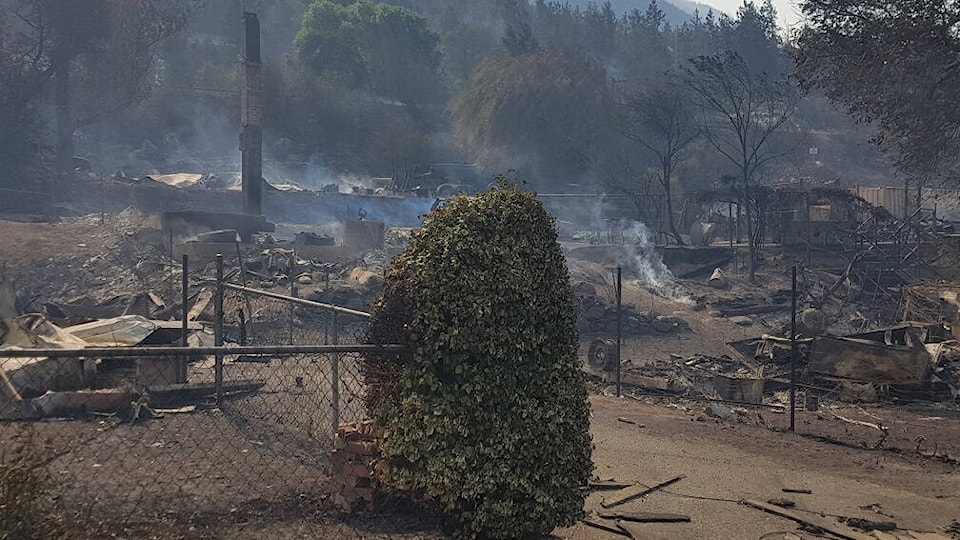With climate change fuelling increasingly severe fire seasons in B.C. and Alberta, the tech leader is ensuring that communities and emergency providers stay connected to reliable networks when and where they’re needed the most.
For residents of Cook’s Ferry Indian Band, reliable connectivity is much more than a modern necessity. When a dangerous wildfire threatened the Central Interior community earlier this year, the ability to make a phone call or send a text meant the difference between life and death.
“We were on a high alert since June 30, the night the fire demolished Lytton. We were put on a tactical evacuation alert by the police that night,” says Chief Christine Minnabarriet, recalling the fast-moving blaze that had earlier destroyed the nearby community of Lytton, killing two people, and threatened the safety of her own.
With time of the essence, Cooks’ Ferry turned to Facebook to ensure community members had access to reliable, up-to-date information, with Chief Christine posting fire updates regularly, often several times a day.
“In an emergency, you can’t beat network connectivity in terms of getting information out promptly,” notes Chief Christine.
It’s a philosophy shared by TELUS, the only telecom, and one of few vital utility providers, to sit at the strategy table with B.C.’s during fire season. With climate change fuelling increasingly severe fire seasons in British Columbia and Alberta, the technology company has been steadily building specialized expertise to ensure the lines of communication remain safely open so that residents and emergency providers are connected to reliable networks when and where they are needed the most.
Without phone service, people can’t be contacted about safety notices or evacuation alerts, and individuals with connected medical alert systems are left vulnerable. Without the internet, debit and credit cards don’t work in service stations to refuel vehicles and ensure people can quickly evacuate. And without communication infrastructure, rescue crews can’t stay connected to safely battle a blaze.
“In our remote area, this increases risk factors when response time for emergency services is slow,” says Chief Christine.
In addition, TELUS is committed to supporting communities that have been impacted by wildfires to ensure evacuated residents have basic necessities to stay safe and comfortable when forced from their homes – everything from a toothbrush, toothpaste and socks to TELUS critters to help comfort children in crisis.
The tech company also partners closely with local leadership to rebuild and improve available networks post-crisis.
“We’re there to keep critical communication services up and running,” says Brian Bettis, TELUS general manager for the Alberta and B.C. northern region.

Connectivity vital in battle against wildfires
Bettis, whose role within TELUS has expanded out of necessity in recent years to include wildfire management, can recount story after story of knuckle-biting scenarios where TELUS technicians have battled against time — and wildfire — to keep networks operating and, when necessary, install temporary service for residents and front-line emergency crews in crisis.
During this summer’s devastating Lytton fire — which destroyed most of the community, home to both Lytton First Nation and the town of Lytton — TELUS techs raced to re-establish cellular connection after flames destroyed a cell tower and wiped out communication to the region. Technicians drove through the smoke towards the fire towing in a cell-tower-on-wheels, or COW. In addition, TELUS also deployed a smaller and more portable device, called a Calf, to further enable connectivity.
“Our network, mobility, and field teams worked around the clock to keep services working ” says Bettis.
The company also gave out — small, portable devices that provide internet access to hundreds of residents forced from their homes to stay connected to emergency alerts, community updates from their respective Chiefs and Council, and to loved ones.
TELUS also provided people with free chargers, along with non-perishables and water which they delivered to evacuation centres.
And when Cook’s Ferry members had to evacuate and relocate their Emergency Operations Center and administration office to Basque IR 18, one of their reserves outside of the main community, and were left without reliable internet, TELUS immediately stepped in to help.
TELUS discovered there was fibre optics in the general vicinity of Basque IR 18. Within days they were able to connect to the fibre, pull it to the reserve, and deliver a managed fibre service — built at no cost to the community.
For Cook’s Ferry leadership, having network connectivity meant they could continue to have strategy sessions with emergency response teams and work out logistics from their ‘pivot office’ while keeping members apprised of the fire situation.
That direct connection to members, at a time when people were frightened, was critical to help pull the community through the crisis.
“The impacts of this fire are vast. From loss of home, displacement, loss of connection, loss of culture, loss of normality. Everyone, including myself, needs to remind ourselves to be gentle with ourselves and each other,” Chief Christine acknowledged in a Facebook post.

Resilience and rebuilding
TELUS doesn’t just support communities through network expertise and technology. The tech company also coordinates with all levels of government to address first-responder needs, such as acquiring heavy equipment like bulldozers or leveraging airplanes to deliver equipment and supplies.
During the 2016 Fort McMurray fire, for instance, which forced more than 80,000 people to evacuate their northern Alberta homes, Bettis recalls one key intervention: TELUS coordinated with provincial responders to fly into the fire zone to refuel a much-needed generator. This ensured critical communication infrastructure was maintained for emergency responders and aviation regulators.
“First responders and emergency personnel use the services we provide to keep people safe,” says Bettis.
In addition to being on the ground during emergency situations, TELUS is also addressing fire safety and resiliency when rebuilding, with changes to infrastructure — like switching from copper lines to more resilient fibre optic cables.
“Now it’s not just ‘How do we respond?’ It’s ‘How do we prevent?’,” says Bettis. He adds, as forest fires and evacuations become the new normal, it’s key to be able to adapt and evolve these skills every year.
“We learn something new every time,” says Bettis.
Looking forward, Chief Christine says reliable connectivity is growing only more critical to Cook’s Ferry, a community of approximately 350 members and 26 reserves in the Thompson and Nicola valleys, including remote rangeland and areas with limited road access. The majority of community members live off reserve, but are keen to keep abreast of what is happening at home, and have a desire to attend meetings via video conferencing.
Recently, TELUS and Cook’s Ferry partnered with the Government of B.C. through the Connecting B.C. program, Economic Recovery Fund Intake, administered by Northern Development Initiative Trust (NDIT), to accelerate the deployment of to local homes and businesses and bring the reality of a stronger community connection one step closer.
“We’re seeing opportunities everywhere,” says Chief Christine.

